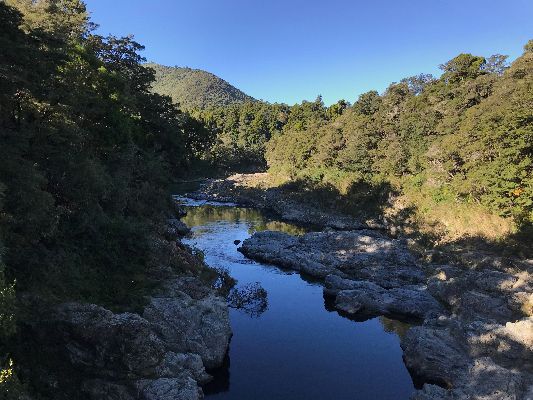An aspirational project that aims to clean up an at-risk Marlborough catchment could cost up to $75 million over 10 years.

The scheme, set to start this month, would involve “collaboration and biodiversity enhancement on a scale seldom seen in New Zealand”.
It aims to deal with sedimentation, nitrogen runoff and E. coli risks in the Te Hoiere/Pelorus catchment.
The project covers the entire catchment inland from the Pelorus River to the outer Pelorus Sound.
The catchment has so far been allocated shares of $8m through the Department of Conservation’s Te Awa programme and $12m through the Ministry for the Environment.
Te Hoiere project manager Heli Wade told the Marlborough District Council’s environment committee on Thursday the first phase focused on areas, such as the catchment of the Havelock estuary and Linkwater’s Cullen Creek.
The estuary was at “high” to “very high” risk of adverse ecological impacts.
Farmers were consulted on the project before lockdown, with public consultation set to re-open this month with a meeting at the Havelock Town Hall on July 30.
“Quick win” projects, which have some funding, would also start this month.
The council has surveyed 650 hectares of land – or about 4.8 per cent of the Te Hoiere/Pelorus catchment – to determine its current condition. It found 13.5ha was suited for wetland restoration, and 24 kilometres suitable for stream-side fencing.
Other quick wins included undertaking more catchment surveys, setting up a native plant nursery and extending the long-tailed bat programme.
Council environmental scientist Matt Oliver said the council would also increase the number of sites it tested for water quality from seven sites to about 100, to find out where contaminants came from.
“Samples will be taken higher in the [Te Hoiere/Pelorus Sound] catchment and lower in the catchment as well,” he said.
Long-term projects would begin in 2022 following the development of an integrated catchment management enhancement plan, which would guide future funding bids.
This phase would focus on the wider Te Hoiere/Pelorus Sound from Te poho-a-kuia/Cullen Point to the Te Nukuwaiata and Te Kakaho/Chetwode Islands, and include coastal marine areas.
The project was one of the first to be delivered under the South Kotahitanga mō te Taiao Alliance, made up of Te Tauihu (top of the south) iwi, local and central government representatives.
A business case completed by a governance group ahead of the project said complete “gold-plated” restoration could cost less than one billion, so a less costly integrated restoration plan was proposed, set to cost between $25m and $75m over the next decade.
Ngāti Kuia chair Waihaere Mason was delighted by the project.
“You're attending to Papatūānuku, mother earth, and we will do everything in our power to support the project ... We must work as one if the outcome is to earn the title 'exemplar',” Mason said.
Marlborough Sounds DOC operations manager Dave Hayes said the project would involve collaboration and biodiversity enhancement on a scale seldom seen in New Zealand.
“There’s a power in working together," he said at the meeting.
Councillor Barbara Faulls, appointed as a council representative to the project, said it was an aspirational and inspirational project.
"This will clean up a lot of problems flagged to Marlborough Sounds ward councillors during the [local] election ... It's a very exciting project for Marlborough and for the top of the south.”
Minister of Conservation Eugenie Sage said last December during her visit to the Te Hora marae in Canvastown the Pelorus catchment needed a "helping hand" to improve its water quality.
Pelorus was the second at-risk catchment identified for restoration by DOC, the first was Northland's Kaipara catchment.



 Peter Dunne: Dunne's Weekly - Mayor Whanau's Rare Win - To Her City's Detriment
Peter Dunne: Dunne's Weekly - Mayor Whanau's Rare Win - To Her City's Detriment Binoy Kampmark: Ironic Dependency - Russian Uranium And The US Energy Market
Binoy Kampmark: Ironic Dependency - Russian Uranium And The US Energy Market Binoy Kampmark: Arrest Warrants From The Hague - The ICC, Netanyahu And Gallant
Binoy Kampmark: Arrest Warrants From The Hague - The ICC, Netanyahu And Gallant Ian Powell: General Practice Visits, Emergency Department Presentations, And Social Determinants Of Health
Ian Powell: General Practice Visits, Emergency Department Presentations, And Social Determinants Of Health Gordon Campbell: On The Hikoi Aftermath
Gordon Campbell: On The Hikoi Aftermath Eugene Doyle: Has WWIII Started?
Eugene Doyle: Has WWIII Started?